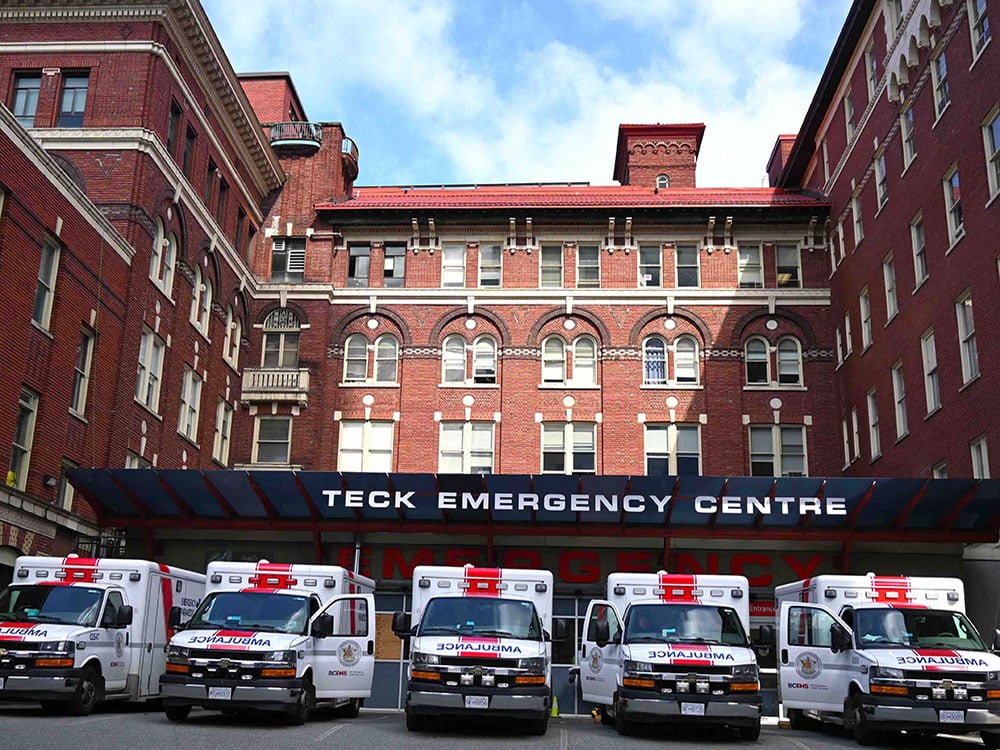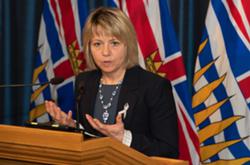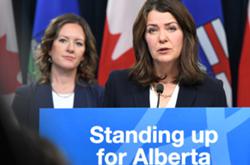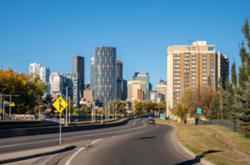Four years ago this month, a few doctors in Wuhan, China, were dealing with a pneumonia of unknown origin. The outbreak would be reported online on Dec. 31, 2019. By spring 2020 the world was locked into a pandemic that continues to infect and kill millions while also damaging health-care systems around the world.
Our own system is badly battered, but we could make a modest start at repairing it.
Andrew Longhurst, a research associate of the B.C. office of the Canadian Centre for Policy Alternatives, recently published a discouraging summary of our present health situation. It noted:
- 2022 was our third consecutive year of declining life expectancy.
- COVID-19 killed more Canadians in 2022 (19,716) than in 2021 (14,466).
- COVID-19 moved up from fourth to third as a cause of Canadians’ deaths, behind heart disease and cancer.
- More Canadians have been hospitalized with COVID-19, for longer times and at higher cost, in 2022-23 than in 2020-21.
- Canadian health-care staff took 17 per cent more sick leave in 2021-22 than in the previous year, and B.C. paid seven times more to private, for-profit staffing agencies than it did the year before.
It’s clear that our politicians are over COVID-19, even if it’s not done with Canadians. Statistics Canada released the latest COVID-19 data with no fanfare and zero comment from politicians.
The lesson governments have learned from the pandemic is to avoid talking about it while doing as little as possible. One wrong word and the convoys could come honking back.
It’s also clear that governments have abandoned public health, leaving Canadians free to enjoy the thrill of betting their lives every time they walk into a crowded, unventilated place. Health-care workers are making personal decisions, too — to leave the field, or to migrate to private staffing agencies.
A GP for everyone?
So this is a good time to pause and reflect on where we go from here — some practicable, affordable way to restore the health-care system and recruit more good people for it.
The Canadian Medical Association Journal recently offered a good suggestion: since people with their own general practitioners have better health outcomes, train more GPs — enough so that every Canadian, everywhere, has one.
The authors of the report compared Canada with nine other Organization for Economic Co-operation and Development countries where at least 95 per cent of the citizens have access to a primary health-care worker or primary care clinic. At the start of the pandemic, only 90.5 per cent of Canadians could say the same.
“The pandemic,” the authors write, “added further strain, spurring some family physicians to retire early, a phenomenon not unique to Canada.”
The report found our overall health-care spending was in the middle of the range of the other countries, but our public spending was the lowest at 70 per cent, and has been since the 1990s. Canada, Denmark and the United Kingdom have the fewest hospital beds per capita, and we spend less on primary care than the average among 21 OECD countries.
For example, we dedicate just over five per cent of health-care spending to general primary care, with very little more for home-based care. Finland spends just under six per cent on general primary care, one per cent on home care and about three per cent on preventive care, for a total of about 9.5 per cent of all health-care spending.
How patients connect with a family physician varies from country to country. Citizens of Finland, for example, are automatically registered with the health centre closest to their home. Nurses are patients’ first contact and may arrange an appointment with a physician, who is salaried.
Not just fee-for-service
In the Netherlands, patients buy health insurance from private insurers and then choose a nearby physician, who may be paid in various ways: capitation (a fixed amount of money per patient per time), inter-professional care (for example, Type 2 diabetes management) and performance incentives (for chronic disease management). People have access to primary care 24 hours a day.
In Norway, municipalities contract with family doctors who then work in groups. They must keep time available for patients with urgent needs; unless patients arrive at an emergency department by ambulance, a family doctor must refer them there. Payments may include capitation, copay or fee-for-service through the national insurance program.
The authors of the CMAJ article make a crucial point: there are many ways to fund and run a health-care system, and we don’t have to lock ourselves in to the system that emerged from the politics of 1960s Canada.
Suppose we surveyed other public health-care systems and adopted some of their methods. Suppose we put some of our family doctors on salary, with paid vacations, an excellent pension and a sabbatical every seven years to go back to school for professional training. Their offices and support staff would be publicly funded too.
Suppose we also try different forms of payment apart from fee-for-service, like capitation. Run these payment systems as experiments, with health outcomes as a critical standard. If health outcomes improve, and more patients have access to care, keep the new payment system, at least for those who thrive on it.
Incentives to specialize
According to the University of Alberta, Canadian medical students in 2022 graduated with an average debt of $164,688. That obviously puts pressure on new doctors to find specialties and locations where they’re paid enough to reduce that debt as fast as possible.
Entry-level family doctors start at $185,029. A dermatologist starts at $285,332. That disparity creates a strong incentive to specialize.
So we might also adopt an idea from Cuba’s Latin American School of Medicine: full medical scholarships for qualified students who agree to work where the need is greatest.
That would enable new family doctors to launch their careers free of debt. They could afford to buy a home, settle in to their new community and start caring for that community’s health.
Catching more problems, sooner
With an adequate number of GPs, everyone could have their own and some assurance of being seen as soon as the need arises. Doctors could spot problems early, when they’re most manageable, and refer their patients to specialists if necessary. Pressure on emergency departments would ease.
Family doctors would detect outbreaks more quickly and alert public health authorities. As they gained their patients’ trust, doctors might also spot stigmatized problems like sexually transmitted infections and help patients to deal with them more effectively.
The CMAJ report’s authors conclude with some lessons learned: keeping GPs in generalist offices, not in specialist clinics; making GPs accountable to the insurer; making public money a higher proportion of health spending, and spending more of it on primary care; and providing more GPs per capita.
These GPs, the authors say, would work in a system that requires and facilitates patient registration with a family doctor or clinic, encourages close-to-home care, enhances communication between physician and patient, and integrates primary care with the rest of the system.
GPs would be paid by capitation or salary, not fee-for-service, and would be able to arrange for urgent and after-hours care. Walk-in clinics would be rare, and outside the public system (in Norway, walk-in patients must pay out of pocket for services).
These changes would affect only one part of a large, complex system, and many doctors would likely fight it as bitterly as doctors fought medicare when Tommy Douglas introduced it in Saskatchewan long ago. More GPs would also require more support staff, testing and specialists.
But a new generation of GPs could make health care cheaper, more accessible and far less stressful to health-care workers themselves. That alone would make it worthwhile to build a new generation of GPs. ![]()

















Tyee Commenting Guidelines
Comments that violate guidelines risk being deleted, and violations may result in a temporary or permanent user ban. Maintain the spirit of good conversation to stay in the discussion and be patient with moderators. Comments are reviewed regularly but not in real time.
Do:
Do not: